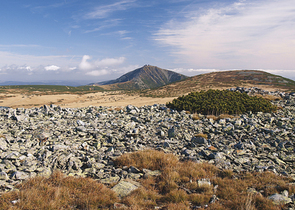Nature Conservation 4/2011 — 3. 11. 2011 — Research, Surveys and Data Management — Print article in pdf
Lustyk P. & Oušková V.: Habitat Mapping Layer and its Updating – The First Possibilities to Compare

In 2000–2004, natural habitat types had been mapped across the whole Czech Republics territory to provide the Natura 2000 site identification with the background data. The process produced a whole-size habitat mapping layer (HML) having been used for fulfilling international duties, but also as an information source on habitat distribution and size for the State/Public Administration authorities, university students as well as for a lot of commercial bodies.
In 2006, a twelve-year cycle of updating the HML has started. Therefore, the former data are replaced by updated ones. By April 2011, approx. a quarter of the countrys territory was mapped in the field and obtained data digitalized. Thus, the first comparison between the previous and updated data could be carried out. High proportion of the former data have been updated e.g.in Pannonian termophilous oak forests on sands or in some Alpine habitat types which were chosen for a pilot study. Due to the updating, both size and number of habitat segments decreased. The changes would be caused by more precise identification of mosaic segments and their drawing in more details (the former mapping often overestimated small-size segments of the habitat mosaic), more accurate background maps, changes in natural habitat type classification, by questionable HML quality in the Krkonoše/Giant Mts respectively. As the next step, data on habitat quality were compared each other. First, a convert table pooling data on habitat segment quality which allowed comparison of the former and updated data was developed. Consequently, the convert key was applied for selected natural habitat types. The analysis shows that changes in the quality of these natural habitat types are very small only. In the future, the convert key shall be definitely applied in a lot of other analyses and it shall provide with more opportunities of using the HML.

